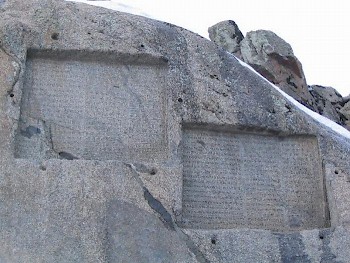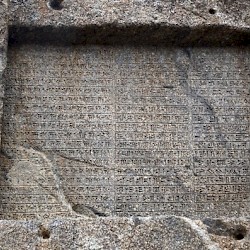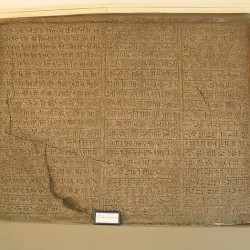Gandj Nameh
Q70786946Gandj Nameh: place near Hamadan (ancient Ecbatana), where the Achaemenid kings Darius I the Great and Xerxes left inscriptions. The nearest village is called Abbasabad.

The waterfall near Gandj Nameh is at the end of a small valley near the ancient road from Ecbatana to Konkobar and Behistun, about eight kilometers west of modern Hamadan. The valley is lovely, with trees of common ash (which is locally known as "sparrow's tongue"). In Antiquity, this must have been a splendid picknicking place along the road, just like today.
At a stone's throw from the waterfall are two ancient Achaemenid inscriptions, written in what Darius I the Great called the "Aryan script". Holes along the upper and lower edge indicate where wooden panels could be anchored into the rock: apparently, the inscriptions were covered in the winter. In the Middle Ages, the inscriptions were believed to indicate where a treasure could be found; in fact, "Gandj Nameh" means something like "treasure text".

The two texts are almost identical. Both are in three columns of twenty lines each, and contain the same information in three languages: Persian, Elamite, and Babylonian. They both begin with praise for the supreme god Ahuramazda, continue with the genealogy of the maker (to the left Darius, son of Hystaspes; to the right Xerxes, son of Darius), and end with the royal titles.
There is one striking difference, however: Darius calls Ahurmazda "a great god", while in Xerxes' text, he is called "the greatest of all gods". The first document sounds monotheistic, the second one polytheistic.
The text of Darius' inscription is here; the text of Xerxes' inscription is there. Excellent copies of the two texts can be found in the nice Archaeological museum of Hamadan.
 Gandj Nameh, Darius' inscription |
 Gandj Nameh, Darius' inscription, Copy |
 Gandj Nameh, Xerxes' inscription, Copy |
 Gandj Nameh, Xerxes' inscription |